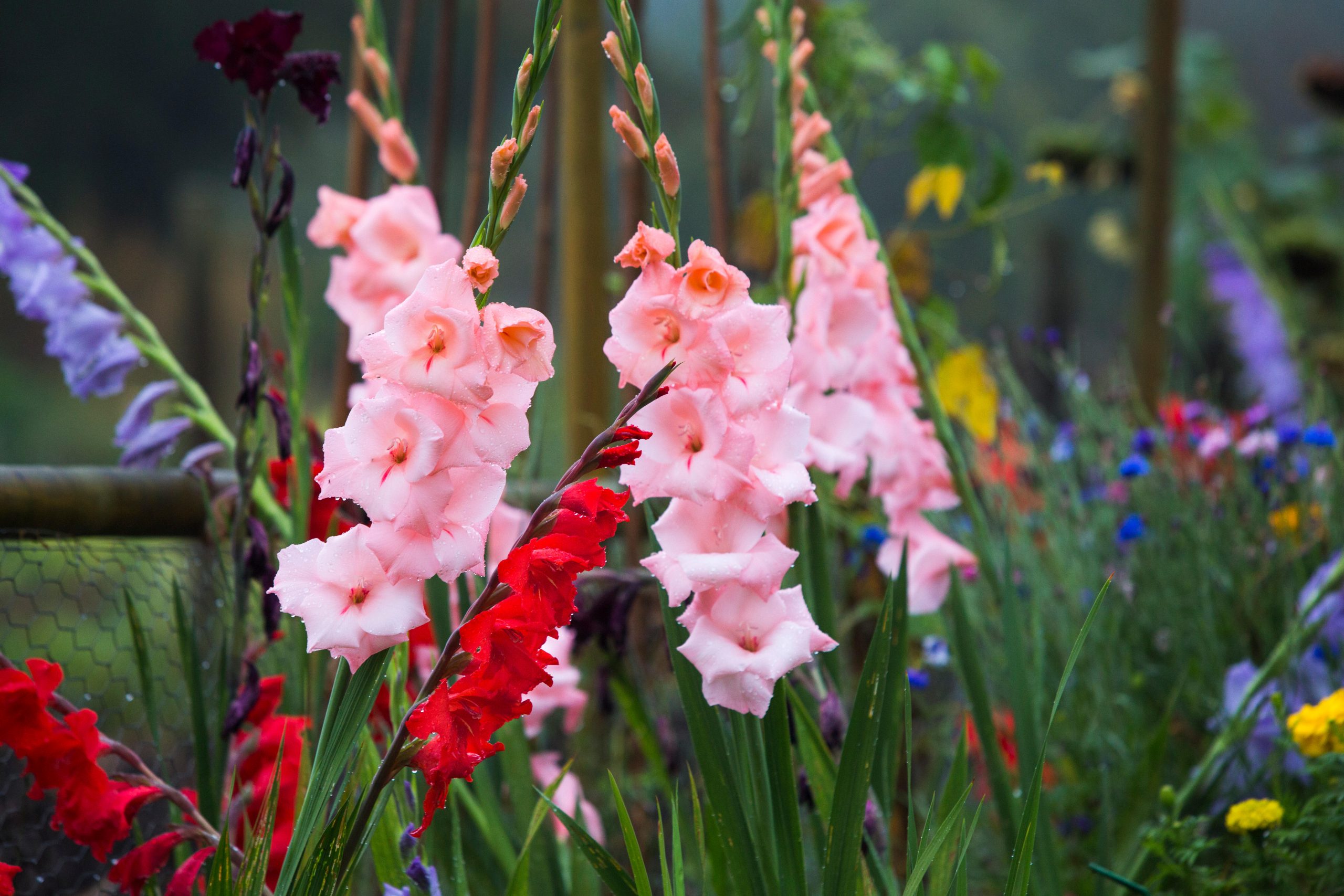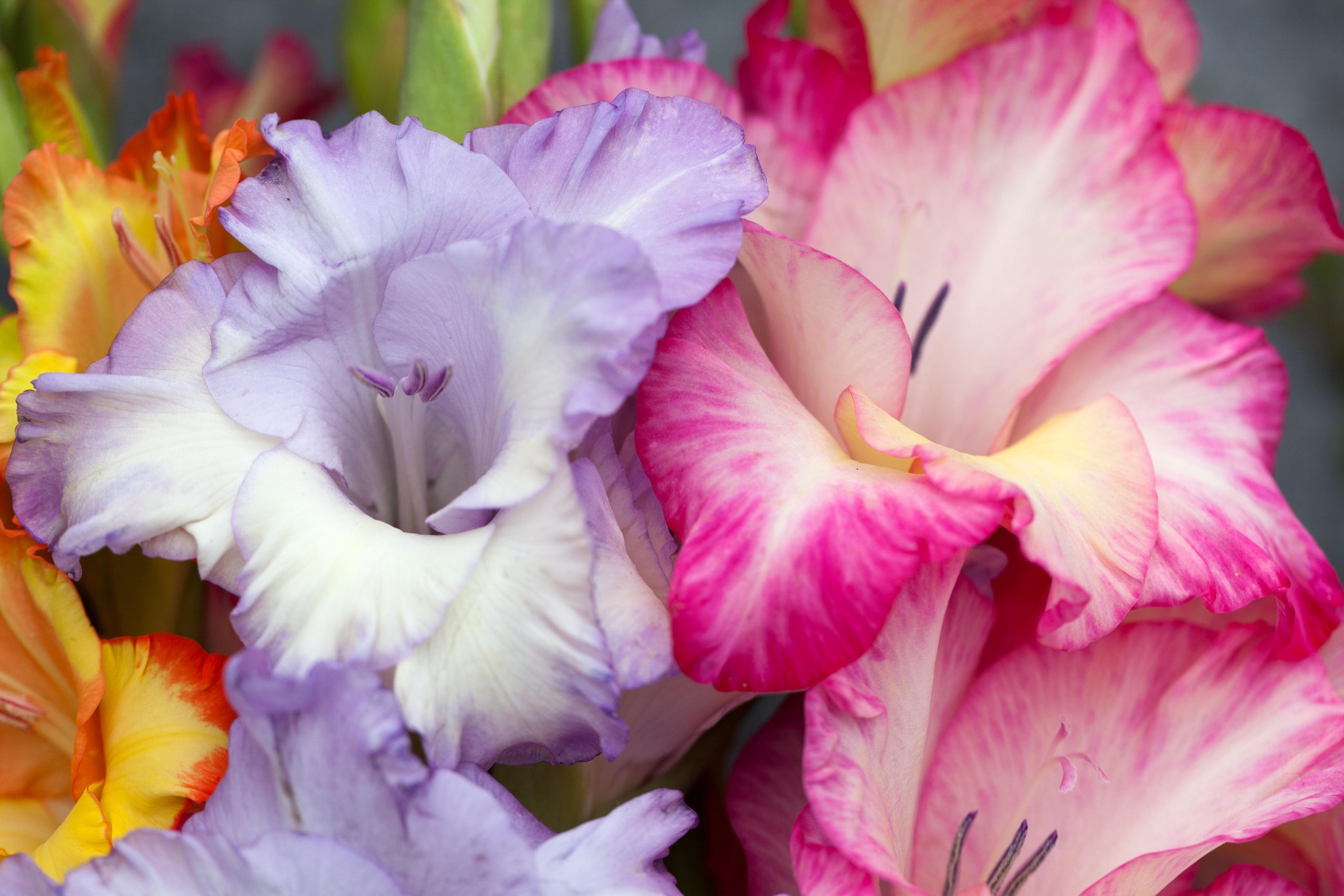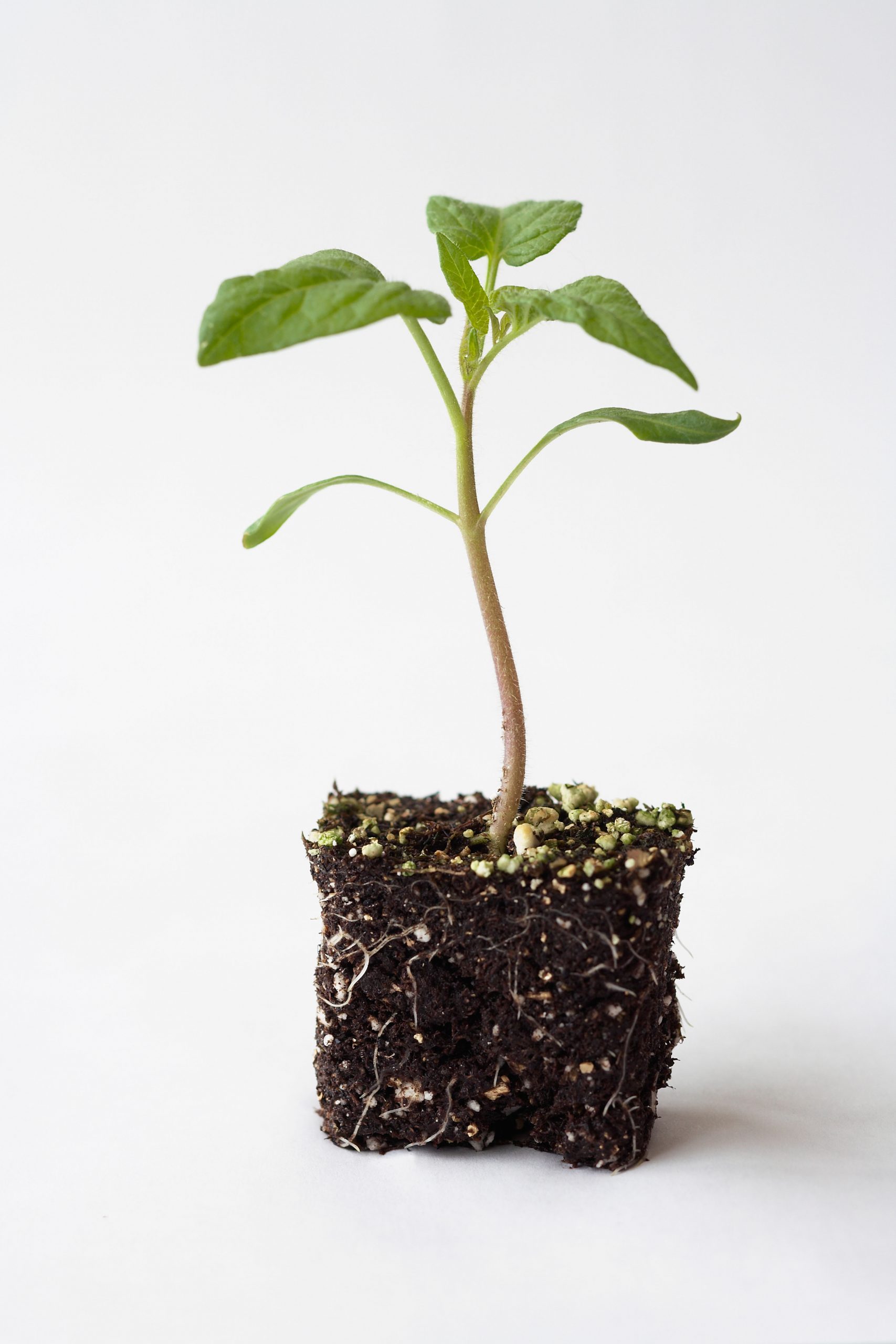Gladioli: Why we should 'drop our prejudices and see their qualities'
Charles Quest-Ritson explains why we shouldn't be so quick to judge Gladioli.


I love gladioli, but I realise that many Country Life readers may not share my passion. Good taste has much to answer for. The cor-blimey gladioli you see in other people’s gardens are anathema to strict and peculiar plantsmen; so are dahlias and chrysanths. People like us don't grow them. The only acceptable gladioli are the wild ones you see in Mediterranean pastures and olive groves.
Very pretty they are, too, when they flower in April and the wheat fields are flecked with thousands of pale purple Gladiolus italicus. Mediterranean farmers, however, know that gladioli are noxious weeds that reduce their yields and are hard to eliminate without serious weed killers that amateurs are no longer allowed to use.
Then there’s G. communis subsp. byzantinus, which flowers a little later, and G. illyricus, which is actually native to the sandy soil of the New Forest, although it struggles to survive on this side of the English Channel. All are delightfully exotic to the English eye.

The epicentre of the genus Gladiolus is somewhere in the fynbos of Cape Province, South Africa, which explains why they are too tender for most of us in Britain and have to be lifted and dried off in the autumn, like dahlias. They prefer full sun and a well-drained soil—sand or chalk is perfect. Gladiolus corms take about three months to grow and flower, so, one year, I spaced out their flowering by planting a few corms every 10 days or so, right through until early July. It worked, but was too much of a faff to repeat.
It is to the southern hemisphere that we must turn to find more choice. Among the prettiest South African species is Gladiolus tristis, which produces an elegant flower spike, 2ft long, with scented, delicate, greeny-white blooms and narrow leaves. Then there’s its hybrid offspring G. × colvillii ‘The Bride’, which has larger, showier flowers —and a darker form called ‘Irish Gold’.
People say they are hardy in a free-draining soil in southern England, but I do remember that all mine died in one of those hard winters we had in the 1980s. G. papilio is another short-ish species and its colouring is a lurid combination of bruise-purple and cream, but it has a discreet charm that grows on you. Quite different is a form called ‘Ruby’ with flowers of rich crimson—pretty for its slender flower spike and the gorgeous colour.
Proper gladdies are the gaudy whoppers that no one likes except me. I first got bitten by them when I was given a bag of mixed corms as a freebie. They came in every imaginable colour including bicolours, grew to 4ft and proved unbeatable as cut flowers—five of them in a semi-circular arc, spaced at 45˚ intervals, give all the structure you need to start an arrangement. They’re heavy to handle, but they last a week in water—or longer, if you pick off the fading flowers.
Exquisite houses, the beauty of Nature, and how to get the most from your life, straight to your inbox.
The bright bold cultivars combine well with purple leaves, such as Rosa glauca or Cotinus coggygria ‘Royal Purple’, a combination that works just as well in the vase as in the garden. And yellow, orange or red cultivars look good with all those daisies such as heleniums and rudbeckias in later-summer borders. If the colours offend your sensibilities, try interplanting ruby-purple ‘Plum Tart’ with ‘Green Star’, which is a mixture of pale green, primrose yellow and cream. If you still dislike them, grow them in your kitchen garden. Drop your prejudices and try to see their qualities.

I grow many of my shorter cultivars in pots. Tulips, too. When my early-flowering greigii tulips are fading, I fill the pots with Gladiolus nanus cultivars, such as ‘Charm’ and ‘Elvira’, which usually grow no higher than 12in–15in. As and when they start flowering, I put them near the house for everyone to see and enjoy them.
Sometimes, I have dried them off after flowering, to plant again next year—I do the same with the tulips—but usually I am disappointed, so I am learning to treat both genera as one-season plants and throw them in the compost bin. Occasionally, there are surprises when they start pushing up through the compost next year.
Drying off the corms does work with Acidanthera murielae, now welcomed into the genus Gladiolus by all-knowing botanists. Whatever its name, everyone should grow it—it’s hardier than most, and sweetly scented. Modern hybridists are trying to get more scent into their new introductions.
The RHS has not trialled gladiolus for 30 years. I asked them why not? I thought I knew the answer—glads are vulgar—but I was delighted by the RHS’s assurance that they are scheduled for trial at Wisley from 2025 onwards. It’s good to realise that I am not alone in my enthusiasm and that the society will shortly be telling us which cultivars are the best. I just hope that the trial judges and RHS members will come to love them as passionately as I do.
Charles Quest-Ritson wrote the RHS Encyclopaedia of Roses
Horticultural aide-mémoire

Prick out tomatoes
Tomatoes are straightforward to cultivate, but their needs must be attended to regularly. Now that your seedlings are nicely through and have produced their first true leaves, it is time to prick them out. Take a seed tray and fill it with potting compost. Level and firm the compost, then begin transferring the seedlings, 40 to a tray. Loosen each seedling with a dibber, then lift it by its seed leaves. Make a hole in the compost and lower it in. No need to firm. When all is done, bump the tray on the bench to even things up, insert a label and water. SCD
Charles Quest-Ritson is a historian and writer about plants and gardens. His books include The English Garden: A Social History; Gardens of Europe; and Ninfa: The Most Romantic Garden in the World. He is a great enthusiast for roses — he wrote the RHS Encyclopedia of Roses jointly with his wife Brigid and spent five years writing his definitive Climbing Roses of the World (descriptions of 1,6oo varieties!). Food is another passion: he was the first Englishman to qualify as an olive oil taster in accordance with EU norms. He has lectured in five languages and in all six continents except Antarctica, where he missed his chance when his son-in-law was Governor of the Falkland Islands.
